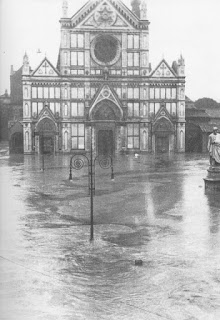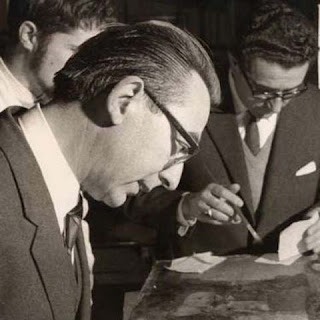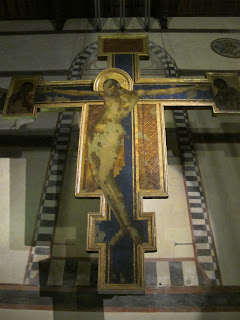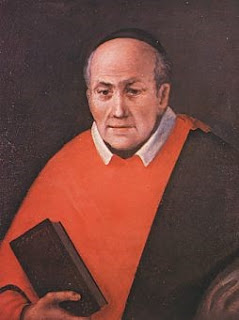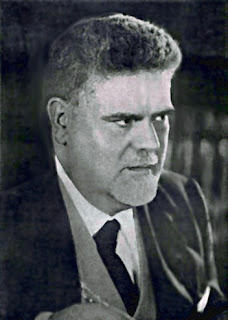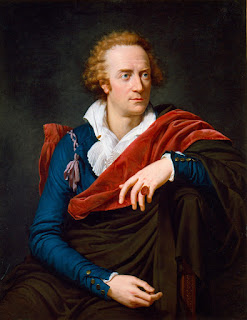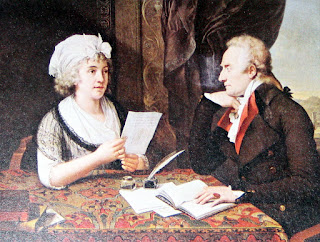Calligrapher who could read Latin changed the course of history
 |
| The linguist and scholar Poggio Bracciolini was born in a village near Arezzo in Tuscany |
For his services to literature he was commemorated after his death with a statue by Donatello and a portrait by Antonio del Pollaiuolo.
Bracciolini was born in 1380 at Terranuova near Arezzo in Tuscany. In 1862 his home village was renamed Terranuova Bracciolini in his honour.
He studied Latin as a young boy under a friend of the poet, Petrarch, and his linguistic ability and talent for copying manuscripts neatly was soon noted by scholars in Florence.
He later studied notarial law and was received into the notaries guild in Florence at the age of 21.
After becoming secretary to the Bishop of Bari, Bracciolini was invited to join the Chancery of Apostolic Briefs in the Roman Curia of Pope Boniface IX.
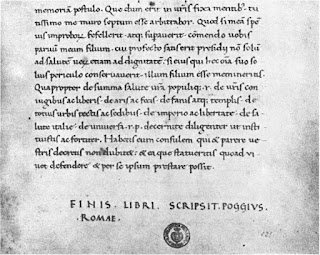 |
| Part of one of Cicero's Catiline Orations copied by Bracciolini in a style of writing that became the basis for Roman fonts |
Bracciolini was well thought of because of his excellent Latin, beautiful handwriting and the diplomatic work he was able to carry out with Florence.
He was never attracted to the ecclesiastical life and its potential riches and, despite his poor salary, remained a layman to the end of his life.
He invented the style of writing that, after generations of polishing by other scribes, served the new art of printing as the prototype for Roman fonts.
In 1415 while working for the Pope at a monastery in Cluny, Bracciolini brought to light two previously unknown orations of the Roman statesman Cicero.
At another monastery in 1416 he found the first complete text of Quintilian’s Institutio oratoria, three books and part of a fourth of Valerius Flaccus’s Argonautica and the commentaries of Asconius Pedianus on Cicero’s orations.
| A statue said to be of Bracciolini in the Duomo in Florence, attributed to Donatello |
It is believed he subsequently discovered seven other orations of Cicero in a monastery in Cologne.
He made copies of the works he found in his elegant script, some of which have survived.
Bracciolini also collected classical inscriptions and sculptures, with which he adorned the garden of the villa he eventually bought near Florence.
At the age of 56 he left his long-term mistress and married a girl of 17, who produced five sons and a daughter for him.
He spent his last years having intellectual arguments with Lorenzo Valla, an expert at philological analysis of ancient texts, and writing a history of Florence.
Bracciolini died in 1459 before he had put the final touches to this work and was buried at the Church of Santa Croce in Florence.
The 2011 Pulitzer Prize winning book, The Swerve: How the World Became Modern by Stephen Greenblatt, tells the story of Bracciolini’s discovery of the ancient manuscript written by Lucretius. Greenblatt analyses the poem’s subsequent influence on the Renaissance, the Reformation and modern science.
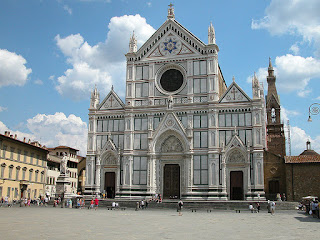 |
| The facade of the beautiful Basilica of Santa Croce in Florence, where Bracciolini was buried in illustrious company |
The Basilica of Santa Croce, consecrated in 1442, is the main Franciscan church in Florence and the burial place among others of Michelangelo, Galileo, Machiavelli, the poet Ugo Foscolo, the philosopher Giovanni Gentile and the composer Gioachino Rossini. It houses works by some of the most illustrious names in the history of art, including Canova, Cimabue, Donatello, Giotto and Vasari. The Basilica, with 16 chapels, many of them decorated with frescoes by Giotto and his pupils, is the largest Franciscan church in the world and the present building dates back to the 13th century.
 |
| The village of Terranuova Bracciolini, near Arezzo, where Bracciolini was born and which was renamed in 1862 |
Terranuova Bracciolini is a town in the province of Arezzo in Tuscany, located about 35km (22 miles) southeast of Florence and about 25m (16 miles) northwest of Arezzo. Originally called Castel Santa Maria, the town was part of Florence’s massive 14th-century project to build new areas to populate in the countryside. It was renamed after Poggio Bracciolini in 1862. Terranuova Bracciolini still conserves its medieval walls and some perimeter towers.
More reading:
The politically astute poet who ruled an Italian state
The death of Hadrian
The artistic brilliance of Donatello
Also on this day:
1893: The birth of bodybuilder Angelo Siciliano, also known as Charles Atlas
1896: The birth of conductor Antonio Votto
Home







